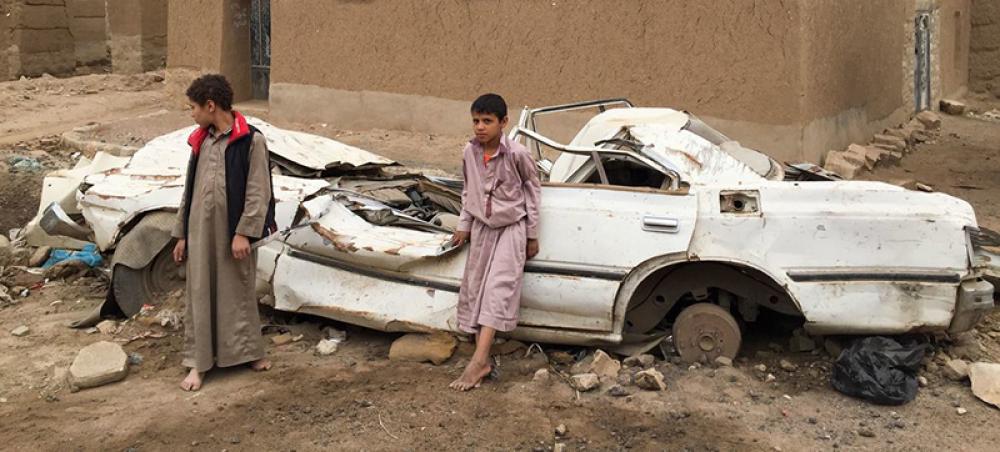Just Earth News | @justearthnews | 06 Jun 2023

Image: © WFP/Jonathan Dumont
New York: A staggering 315,000 grave violations against children in conflict took place between 2005 and 2022, said UN Children’s Fund UNICEF on Monday, describing it as a “stark illustration of the devastating impact of war” on the young.
The UN-verified figures were reported by the agency as States, donors and the humanitarian community meet in Norway, for the Oslo Conference on Protecting Children in Armed Conflict.
The 315,000 incidents were recorded in more than 30 conflict situations across Africa, Asia, the Middle East, and Latin America.
They include more than 120,000 children killed or maimed; at least 105,000 children recruited or used by armed forces or armed groups; over 32,500 children abducted; and more than 16,000 children subjected to sexual violence.
The UN has also verified more than 16,000 attacks on schools and hospitals, and more than 22,000 instances where humanitarian access for children has been denied.
The true toll is likely to be far higher, UNICEF stressed. Additionally, many millions more children have been displaced from their homes and communities, lost friends or family, or been separated from parents or caregivers.
‘War on children’
“Any war is ultimately a war on children,” said UNICEF Executive Director Catherine Russell.
“Exposure to conflict has catastrophic, life-changing effects for children. While we know what must be done to protect children from war, the world is not doing enough. Year after year, the UN documents the visceral, tragic and all too predictable ways that children’s lives are torn apart.”
The UNICEF chief said It is incumbent on all in the international community to ensure children “do not pay the price for the wars of adults, and to take the bold, concrete action required to improve the protection of some of the world’s most vulnerable children.”
The Fund has supported the care and protection of millions of affected children across conflict situations, including through the provision of mental health and psychosocial support, child protection case management, family tracing and reunification, and services for child survivors of gender-based violence.
Rehabilitating child soldiers
Just last year, UNICEF reached almost 12,500 former child soldiers with reintegration or other protection support, and more than nine million children with information designed to help them avoid explosive remnants of war such as landmines.
The agency said that the scale of protection risks is vastly outpacing available funding however.
New analysis by Humanitarian Funding Forecasting, commissioned by UNICEF, Save the Children, the Alliance for Child Protection in Humanitarian Action and the Global Child Protection Area of Responsibility, reveals that by 2024, the child protection sector will require $1.05 billion, increasing to US$1.37 billion by 2026, to address the protection needs of children in armed conflict.
If the current pace of humanitarian funding continues, the projected shortfall would stand at $835 million in 2024, growing to US$941 million by 2026.
This gap could leave conflict-affected children exposed to the immediate and lasting impacts of war, child labor, trafficking, and violence, UNICEF warned.
Call for new commitments in Oslo
At the Oslo conference, the agency is calling on government to make bold new commitments, including:
To uphold and operationalize the international laws and norms already in place to protect children in war – including to protect schools, hospitals and other protected objects like water and sanitation facilities from attack, to stop the recruitment and use of children by armed groups and forces, to stop the use of explosive weapons in populated areas.
Hold perpetrators to account when children’s rights are violated.
Step up with critical resources to fund the protection of children in conflict at the scale and speed required, in line with growing need. This must include investment in humanitarian response and in national child protection workforces.
“We must deliver a child protection response that is equal to the challenges we face,” said Ms. Russell. “We need to do everything we can to reach all children in need, particularly the most vulnerable.”